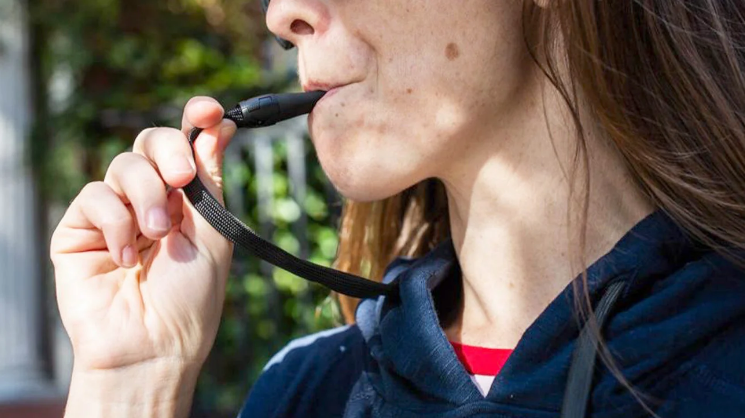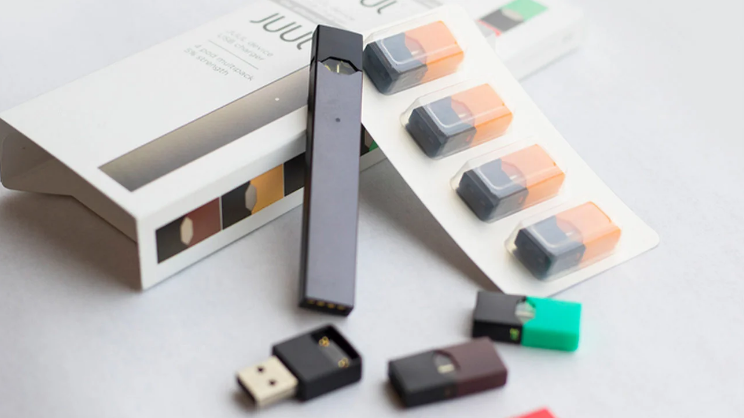There’s a variety of vaping products companies are selling online, designed to resemble everyday items. Teens are using these to conceal their vaping from parents and teachers.
Over 1,200 cases of vaping-associated lung injuries have been reported in the United States, with 15% of those cases involving children under 18 years old. Tragically, 26 deaths have been confirmed due to these injuries.
Teens are currently employing a wide array of devices to vape discreetly, right under the noses of parents and teachers.
Often, these vaping products masquerade as common household objects like watches, writing pens, and even clothing.
The Food and Drug Administration (FDA) has taken notice. The agency announced today it has sent 10 warning letters to companies manufacturing or importing “unauthorised electronic nicotine delivery systems.”
These include sweatshirts with “stealth pockets” and items designed to resemble smartwatches, pens, and toys like fidget spinners.
Here are details on some of the more common stealth vaping devices currently in use.
Hoodies

Hooded sweatshirts are a staple in most teen wardrobes, so it probably won’t raise suspicion when your teen shows up at breakfast one morning wearing a new one, but it should.
Vape hoodies are a popular way to conceal vape pens, allowing teens to vape anywhere, even in class, without being detected.
To use it, all they have to do is insert a vape pen into the end of one of the hoodie’s specially designed tubed drawstrings. The pen is then slid into a discreet chest pocket, and users inhale through a mouthpiece on the other end of the drawstring. This allows the plume of vapor emitted from the pen to be concealed inside the drawstring’s tube.
Backpacks

These days, backpacks are more than just a means to carry books and laptops to and from school. They can also conceal teen vaping.
Vaping backpacks generally contain a pouch to hold the vaping device with concealed tubing and a mouthpiece in the shoulder strap, allowing it to be pulled out for use as desired and then tucked discreetly away.
Phone Cases

With smartphones ubiquitous among teens, you may not even think twice about them getting a new phone case, but be aware that their latest accessory could also conceal a vaping habit.
Vaping phone cases fit over a smartphone just like a normal case, but with a significant difference: You can attach an atomizer to it and vape e-liquids.
Pens

While many vape pens are named “pens” simply because their size and shape resemble a pen, some are purposely designed to look like pens to hide their true function.
In fact, there are even vape pens on the market that have been cleverly designed to actually function as a writing implement. All the user has to do is unscrew the top of the pen, insert a cartridge, and then vape through the top of the pen.
Smartwatches

While they may look like smartwatches at first glance and even tell you the time and date, a press of a button allows the user to remove a pod from the watchband which can be used as a vape.
USB Drives

Devices like the Juul brand of e-cigarette, which closely resemble USB drives, have become a very popular option for teens to hide their vaping.
All they need to do is toss it in their backpack, and unsuspecting parents are none the wiser that the device isn’t a USB drive with data needed for homework.
Knowing the Risks
As of October 8, 2019, the Centers for Disease Control and Prevention (CDC) reports that there have been 1,299 vaping-associated lung injury cases reported to their agency.
The reports came from 49 U.S. states, the District of Columbia, and one U.S. territory. Among these reported injuries, 15 percent involved children under 18 years of age.
In addition, there have been 26 confirmed deaths due to these injuries, although the CDC did not report how many of these were teenagers.
According to the U.S. Surgeon General, there can be several potentially dangerous ingredients found in e-liquids, including:
- Very small particles that can make their way deep into the lungs
- Flavorants like diacetyl, which have been linked to lung disease
- Volatile organic compounds
- Heavy metals, such as nickel, tin, and lead
While it’s not yet clear exactly what is causing the recent spate of lung disease and death related to vaping, the CDC reports that they are most likely associated with chemical contaminants found in black market tetrahydrocannabinol (THC) products.
Vitamin E acetate appears to be a possible culprit, but no clear pattern has yet emerged.
It has been suggested by Aaron Riley, CEO of California-based cannabis testing laboratory CannaSafe, that the contaminants of concern may be either vitamin E acetate or the pesticide myclobutinil.
According to the cannabis advocate Leafly, vitamin E acetate may be added to unregulated products to thicken the cannabis oil or hide the fact that it has been diluted.
Myclobutanil, according to CleanLight, a maker of agricultural equipment, is a pesticide used to control fungal growth on certain crops. Although it is not recommended to be used on tobacco or cannabis crops, they state, many cannabis growers do.
It is not known exactly how vitamin E acetate might damage the lungs, but the CDC’s Morbidity and Mortality Weekly Report states that the use of e-cigarettes has been associated with cases of lipoid pneumonia, a condition in which fat particles get into the lungs, triggering inflammation and damage.
According to Riley, myclobutanil, when heated, can be transformed into a toxic chemical called hydrogen cyanide.
CannaTech’s laboratory tested more than 100 brands of licensed cannabis cartridges and compared them to illicit cannabis brands. Vitamin E acetate was found in more than 90 percent of the unlicensed brands versus none in the licensed brands. High levels of pesticides were found in all of the unlicensed brands with none being detected in the licensed brands.
Riley does concede that it might appear to outside observers that he has a vested interest in protecting the cannabis industry.
However, he noted, his laboratory is strictly regulated by the state and independently accredited by a third party, ensuring the quality of their analysis.
What Can Parents Do?
According to Thomas Brandon, PhD, director of the Tobacco Research and Intervention Program at Moffitt Cancer Center in Tampa, Florida, it’s important that parents remain calm and not overreact if they find out their child is vaping.
“Share your concerns with your teen child, but do so as an informed parent, rather than simply repeating some of the extremism that has emerged in recent months,” he said.
Dr. Michael B. Siegel, MPH, a tobacco control expert and public health researcher at the Boston University School of Public Health, seconded this idea.
